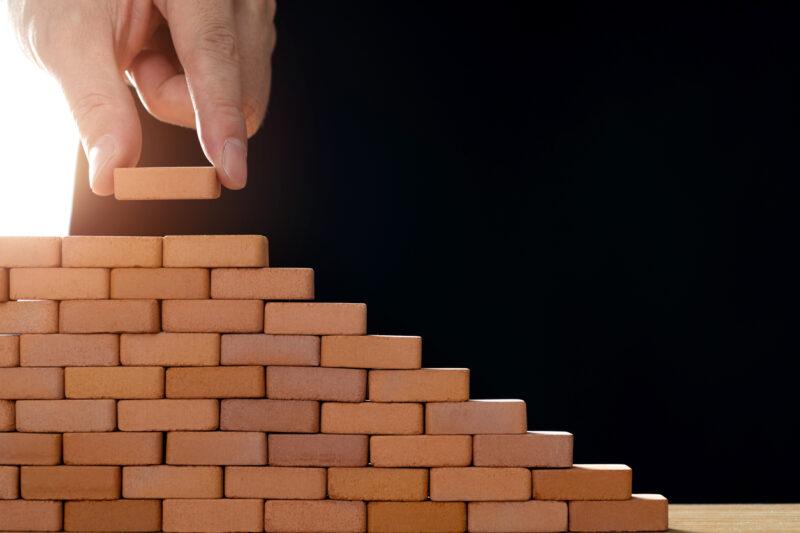Procurement practices for construction materials have evolved significantly over time, shaped by changes in technology, globalisation, regulatory environments, and industry trends.
In this blog, we share how the types of materials construction companies have needed have evolved over the years before discussing past trends, current trends, and future predictions for material procurement methods.
Evolution of Construction Materials Over Time
Local Sourcing (Ancient Times to Pre-Industrial Revolution)
In ancient times, construction materials were primarily sourced locally due to limitations in transportation. Craftsmen and builders relied on materials available in their immediate surroundings, such as wood, stone, and clay.
Industrial Revolution (18th to 19th centuries)
The Industrial Revolution marked a shift towards mass production, leading to the availability of standardised construction materials. Railways and improved transportation allowed for the distribution of materials over longer distances.
Specialisation and Standardisation (Late 19th to Early 20th centuries)
Specialisation in manufacturing led to the production of standardised construction materials, such as steel, concrete, and bricks. Builders and contractors began to source materials from specialised suppliers.
Post-World War II (Mid-20th century)
The post-war period saw increased industrialisation and the emergence of large-scale infrastructure projects. Governments often played a significant role in procurement, emphasising efficiency and cost effectiveness.
Globalisation and Technology (Late 20th to 21st centuries)
Globalisation allowed for the importation of construction materials from around the world, leading to increased variety and competition. The use of technology, such as the internet and digital platforms, streamlined procurement processes.
Traditional Materials Procurement Practices
Historically, materials procurement in the construction industry has been a challenging process, plagued with inefficiencies, price inflation, and poor product availability.
From long, manual searches to find suitable suppliers, to endless quote-chasing via the phone, to complex price comparison spreadsheets, there have been many opportunities for improvement in the construction procurement process.
Despite advancements in technology and other areas of construction, procurement still faces many of the same problems.
Current Trends in Construction Materials Procurement
Digitalisation and E-Procurement
Digital platforms and e-procurement systems designed specifically for the construction industry are being developed and used for the sourcing of construction materials, enhancing efficiency and transparency.
Sustainability and Green Procurement
There is a growing emphasis on sustainable and environmentally friendly materials, driven by environmental concerns and regulations. Although globalisation has led to contractors sourcing materials from further afield, this trend is now starting to reverse, and more local suppliers are being sought again to reduce the carbon emissions associated with transporting materials long distances.
Supply Chain Resilience
Recent events, such as the COVID-19 pandemic, have highlighted the importance of resilient supply chains. Procurement practices are adapting to mitigate risks and disruptions. A growing number of contractors are seeking to diversify their supply chains and begin working with alternative suppliers to ensure options are in place should one supplier become unavailable.
Collaborative Procurement Models
Collaborative approaches, such as integrated project delivery (IPD) and building information modeling (BIM), promote better collaboration among stakeholders in the procurement process.
Future Predictions for Construction Materials Procurement
Blockchain Technology
Blockchain has the potential to enhance transparency, traceability, and security in procurement processes, reducing fraud and improving trust.
Predictive Analytics
The use of predictive analytics in construction materials procurement can help optimise inventory management, forecast demand, and improve decision making.
Circular Economy and Recycling
The construction industry is likely to see increased focus on circular economy principles, promoting the reuse and recycling of materials to reduce waste.
3D Printing and Advanced Materials
Advancements in 3D printing and the development of innovative construction materials may reshape traditional procurement practices.
Regulatory Changes
Changes in regulations, particularly related to environmental standards and labour practices, will continue to influence procurement strategies.
Procurement practices for construction materials have evolved and are now being affected by a technology-driven landscape.
Current trends emphasise digitalisation, sustainability, and resilience, while future predictions point toward further technological advancements and a focus on circular economy principles.
The construction industry is likely to continue adapting to new challenges and opportunities in the coming years.
Ready For The New Way To Buy Materials?
The Build Chain is designed to reduce the amount of time it takes to procure materials and make it easy to benchmark pricing across different suppliers so the best price can be achieved.
Are you ready to transform your materials procurement process and take full advantage of new technology?





